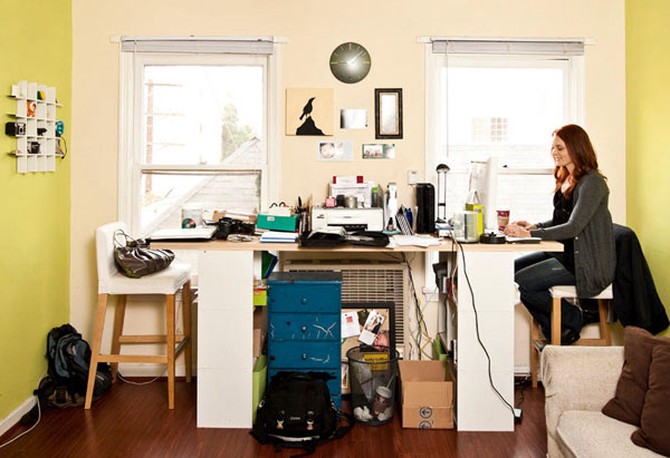10 Steps to a Cleaner Office
We did a series of makeovers in honor of O's tenth anniversary in May 2010. Here, Peter Walsh transforms a home office.
By Amanda Robb
STEP 1: Group Like Materials Together
In order to help Joanna Wilson, (left, in her "before" office), a 25-year-old photographer with a serious home office clutter problem, Peter Walsh, organizing expert and author of Enough Already! Clearing Mental Clutter to Become the Best You, starts off by asking what works. Joanna likes the two, large desks, but admits it's hard to find things. "There's software. There's CDs. The desk gets cluttered fat—stuff explodes all over the house," she says.
Step one? Peter asks Joanna to clear the desk and shelves, grouping like materials together: a stack of blank CDs and binders with backup CDs in one box, billing materials in another. This exercise not only helps Peter's clients figure out how much space each category requires but shows them the duplicate staplers or outdated equipment they've accumulated. As he's talking, Joanna unearths cords to electronics she no longer owns—and an overdue parking ticket.
STEP 2: The average retrieval time for a piece of paper is ten minutes; 3 percent of all papers are misfiled. One study put the cost to a corporation of recovering a lost file at $120. You can't afford that. Peter thinks the best file systems are color-coded—we recognize visual cues faster than labels. Joanna likes colored labels and clear folders. (InPlace File System by Peter Walsh, $4 to $35; OfficeMax.com.)
STEP 2: The average retrieval time for a piece of paper is ten minutes; 3 percent of all papers are misfiled. One study put the cost to a corporation of recovering a lost file at $120. You can't afford that. Peter thinks the best file systems are color-coded—we recognize visual cues faster than labels. Joanna likes colored labels and clear folders. (InPlace File System by Peter Walsh, $4 to $35; OfficeMax.com.)
From the March 2010 issue of O, The Oprah Magazine


